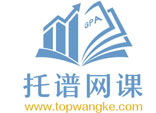1.开发新药的成本估计为50亿美元
(http://www.forbes.com/sites/matthewherper/2013/08/11/how-the-staggering-cost-of-inventing-new-drugs-is-shaping-the-future-of-medicine/) ,但往往只有便士生产另一个单位。使用固定成本,平均总成本和边际成本的概念,清楚地解释了为什么药品是自然垄断。如果您愿意,请使用图表。为什么国家允许自然垄断?有什么危险? (10pts)
制药公司具有非常高的固定成本但可变成本低。这是由于基础设施,工厂的发展以及各种药物,实验室以及能够为各种药物进行研究和开展研究的专业人员的研发而产生的高成本。除了药物的机密信息和专利外,所有这些都被视为制药公司的固定成本。除了数百万美元的投资外,药品还需要寻求当地或国际机构的批准才能在市场上销售药品。需要在其他实验和临床试验中进行各种实验和临床试验以满足要求所有这些投资都是进入的障碍,从而鼓励药物成为自然垄断。
制药公司的可变成本非常低,根据产量变化的成本在行业中并不重要。工业中的工人工资,电力使用等都非常低。此外,制药公司的边际成本非常低。边际成本是指生产额外单位货物的成本。就药品而言,一旦研发完成,更多药物的生产成本将变得非常微不足道。这是因为可以使用相同的专利/配方,并且随着规模经济,更高的产量降低了平均生产成本,因为可以使用更多的产出来划分高专利和研发成本。这意味着一旦产量增加,平均总成本就会急剧下降。规模经济问题非常重要,与药品公司的利润相关。
垄断有其自身的优势。垄断确保了药物的持续交付,特别是它具有非常高的前期成本。允许公司作为垄断企业进行投资和发展,在经济上是可行的。一旦允许公司成为垄断企业,他们所做的超常利润就会鼓励他们在研发方面投入更多资金,投资新产品/药品。还有规模经济的情况。在垄断的情况下,平均总生产成本显着降低,因此生产者有可能将成本节约转嫁给消费者,从而形成更有效的市场。
垄断也有危险,因为一旦他们拥有非常强大的市场力量,他们可以收取更高的价格来提高他们的利润水平。这将使他们获得超常利润。特别是对于制药公司而言,他们的产品是药物,对每个人的健康至关重要。因此,垄断具有固定供应价格的危险,在市场中产生膨胀的价格。由于供应的选择有限且价格缺乏弹性,这些在市场上可能是危险和不健康的。有时垄断可能失去创新激励,因为市场竞争有限。总体而言,行业垄断存在危险。
1. It costs an estimated $5 billion dollars to develop a new drug(http://www.forbes.com/sites/matthewherper/2013/08/11/how-the-staggering-cost-of-inventing-new-drugs-is-shaping-the-future-of-medicine/), but often only pennies to produce another unit. Using the concepts of fixed cost, average total cost and marginal cost, clearly explain why pharmaceuticals are a natural monopoly. Use a graph if you like. Why might it be desirable for the state to allow natural monopolies? What are the dangers? (10pts)
Pharmaceutical companies have a very high fixed cost but low variable cost. This is due to the high cost incurred for basic infrastructure, the development of the factories, and the research and development of various drugs, laboratories, as well as professionals who are able to work and conduct research for various drugs. As well as the confidential information and patents for the drugs, all these are considered as fixed cost for pharmaceutical companies. Other than millions of dollars for the investment, pharmaceuticals also need to seek approvals from local or international authorities for their drugs to be able to sell in the market. Various experiments and clinical trials need to be conducted in other to meet the requirements And all of these investment serves as barriers to entry, thus encouraging pharmaceuticals to become a natural monopoly.
Pharmaceuticals companies have a very low variable costs, those costs that changes according to the output are not significant in the industry. Worker’s wages, electricity usages and etc are very low in the industry. Furthermore, pharmaceutical companies have very minimum marginal costs. Marginal cost refers to the cost of producing an additional unit of goods. In the case of pharmaceuticals, once the R&D is completed, the production cost of more drugs will become very insignificant. This is because the same patent/recipe can be used, and with economics of scale, higher production output lowers the average production cost as more outputs can be used to divide the high patent and R&D costs. And this implies that the average total cost reduces sharply once the output increases. The issue of economies of scale is very important and relevant for the profits of pharmaceuticals companies.
Monopolies have its own advantages. Monopolies ensures consistent delivery of the drugs, especially it has a very high up-front cost. It is economically feasible for the state to allow companies to invest and grow as monopolies. Once the firms are allowed to become monopolies, the supernormal profits they make encourage them to invest more in R&D, investing new products/drugs. There is also the case of economies of scale. With monopoly, the average total cost of production is significantly reduced, thus there is a possibility of producers passing the cost saving to consumers, leading to a more efficient market.
Monopolies can also have dangers as once they have very strong market power, they can charge higher prices to increase their profit level. This will allow them to reap supernormal profits. And especially for pharmaceuticals companies, their products are drugs, essential for everyone’s health. Thus, monopolies have the dangers of fixing price of supply, creates inflated price in the market. Due to limited choice of supply and price inelastic nature of the goods, these can be dangerous and unhealthy in the market. And sometimes monopolies can lose incentives for innovation, as there presents limited competition in the market. Overall, there are dangers for having monopolies in the industry.
2.阅读这篇文章:http://www.nytimes.com/2013/10/13/us/the-soaring-cost-of-a-simple-breath.html
绘制专利哮喘药物的供需曲线。假设生产的边际成本很低且不变,这通常是药品的情况。画出边际收益曲线(你不必确切。我只是想确保你得到一般的想法)。显示利润最大化的垄断者会产生多少,并解释这如何减少消费者剩余。显示图表上消费者剩余的减少量。如果您愿意,可以使用我提供的excel电子表格。您可以使用Excel来绘制它,但您必须弄清楚如何显示(或解释)经济盈余的无谓损失。
奖励5分:在垄断利润最大化生产水平下,需求弹性会发生什么变化?你能解释一下为什么会这样吗? (10pts)
在专利哮喘药物的情况下,需求是价格无弹性的,因为它是哮喘患者的必需品,并且长期需要它。边际收益曲线的梯度是需求曲线的一半。在MR = MC时,利润最大化垄断产品,这个价格高于平均成本,这确保了它们的最大利润。
最有效的情况是在P = MC时产生产量,其中价格代表购买者对商品的价值,而边际成本是产生额外单位商品的额外成本。当意味着这种情况时,就可以实现分配效率。在这种垄断的情况下,存在无谓损失,由上图中的三角形ABC表示。而三角形ABD,总无谓损失的上半部分是消费者剩余的损失。由于垄断市场结构,产量水平降低,价格上涨。
在垄断利润最大化生产水平的情况下,它们在MC = MR产生,存在逆弹性定价规则理论。垄断永远不会在需求曲线的非弹性部分上运作。这是因为
MR = P +Q.ΔP/ΔQ= P(1 + Q /P.ΔP/ΔQ)= P(1 + 1 / PED)
当MC = MR时的利润最大化时,
P(1 + 1 / PED)= MC
(P-MC)/ P = -1 / PED
弹性需求是当PED <-1时,非弹性需求是在-1 <PED <0时。当需求价格无弹性,1 + 1 / PED <0时,企业不会产生损失金额。因此,垄断从未在其需求的非弹性部分运作。
2. Read this article: http://www.nytimes.com/2013/10/13/us/the-soaring-cost-of-a-simple-breath.html
Sketch a supply and demand curve for a patented asthma drug. Assume there is a low and constant marginal cost of production, which is typically the case for pharmaceuticals. Draw in the marginal revenue curve (you don’t have to be exact. I just want to make sure you get the general idea). Show how much a profit maximizing monopolist would produce, and explain how this reduces consumer surplus. Show the reduction in consumer surplus on your graph. If you like, you can use the excel spreadsheet I provide. You can use excel to plot it, but you will have to figure out how to show (or explain) the deadweight loss of economic surplus.
BONUS 5 pts: What happens to elasticity of demand at the monopoly-profit maximizing level of production? Can you explain why this is so? (10pts)
In the case of patented asthma drug, the demand is price inelastic, as it is a necessary for asthma patients, and it is a need that is required in the long term. Marginal revenue curve has a gradient that is half of it for the demand curve. Thee profit maximizing monopolist produce at MR=MC, this price is above the average cost, and this ensures their maximized profit.
The most efficient situation is to produce output at P=MC, where the price represents how much buyers value the good and the marginal cost is the additional cost of producing that additional unit of the good. When this condition is meant, allocative efficiency is achieved. In this case of monopoly, there presents deadweight loss, represented by the triangle ABC in the graph above. And the triangle ABD, top half of the total deadweight loss is the loss of consumer surplus. Due to monopoly market structure, the output level is reduced, and price has increased.
In the situation of the monopoly profit maximizing level of production, where they produce at MC=MR, there is a theory of inverse elasticity pricing rule. A monopoly would never operate on the inelastic portion of the demand curve. This is because
MR= P + Q. ΔP/ ΔQ=P(1+ Q/P . ΔP/ΔQ)= P (1 + 1/ PED)
When profit maximization at MC=MR,
P(1+1/PED)=MC
(P-MC)/P=-1/PED
Elastic demand is when PED<-1, and inelastic demand is when -1<PED<0. When the demand is price inelastic, 1+1/PED <0, firms will not produce at the level that its loss money. Thus, monopoly never operates at the inelastic part of its demand.
3.根据本作业所附的三篇文章中提供的信息,您的上述分析,以及您对市场和垄断的了解,您认为哪种药物供应最有效? (10pts)
有关在线垄断的简单概述,请参阅http://ingrimayne.saintjoe.edu/econ/Monopoly/Monopoly.html
我认为最有效的药品供应方式将是鼓励企业建立寡头垄断市场结构,市场上有少数公司供应药品,而不是垄断,歌手供应商不会面临竞争。由于进入门槛较高,只有具有较强财务背景的公司才能投资加入该行业。药品需要广泛研究和开发药物,这些药物的成本非常高。此外,进行实验和临床试验以及药物专利将是非常昂贵的。通过寡头垄断市场结构,企业仍有机会以利润最大化水平运营并获得超常利润。它与垄断相比的好处是它鼓励市场上更多的竞争。消费者在选择产品时有更多的品种和选择。这将激励公司投资研发,以便从市场中获得更高的利益。
政府应通过价格上限来规范行业,这可以确保消费者福利不会受到全面伤害,药品的价格可以保持在合理的水平。这也降低了企业利用其市场力量的可能性。此外,政府还可以提供补贴以支持研发。由于研发有助于新药开发成本最高的部分,在政府的财政支持下,企业将不再以昂贵的价格收费并开拓市场。他们将被鼓励将节约成本转嫁给消费者并增加消费者福利。
3. In light of the information provided in three articles attached to this assignment, your above analysis, and what you know about markets and monopolies, what do you think would be the most efficient way to supply pharmaceuticals? (10pts)For simple overview of monopoly on-line, see http://ingrimayne.saintjoe.edu/econ/Monopoly/Monopoly.html
I think the most efficient way to supply pharmaceuticals will be encouraging firms to have an oligopoly market structure, with a few companies in the market supplying the pharmaceuticals rather than a monopoly with singer suppler facing no competition. Due to the high barrier to entry, only companies with strong financial backgrounds can invest to join the industry. And pharmaceuticals require extensive research and development of the drugs, which are very high in costs. Also, it will be very expensive to conduct experiments and clinical trials, as well as to patent the drugs. With the oligopoly market structure, companies still have opportunities to operate at profit maximizing level and earn supernormal profits. The benefit it has compared to monopoly is that it encourages more competition in the market. Consumer have more varieties and choices when choosing the product. This will incentivize companies to invest in R&D, in order to reap higher benefits from the markets.
The government should regulate the industry via price ceiling, this can ensure the consumer welfare is not fully hurt, the price of the drugs can be kept at a reasonable level. This also reduces the possibilities of firms exploiting their market power. Additionally, the government can also provide subsidy to support the R&D. Since R&D contributes to the highest cost portion for new drugs development, with the financial support of the government, the firms will no longer charge at extensive price and exploit the market. They will be encouraged to pass the cost-saving to consumers and increase the consumer welfare.
关键词:assignment代写,essay代写










